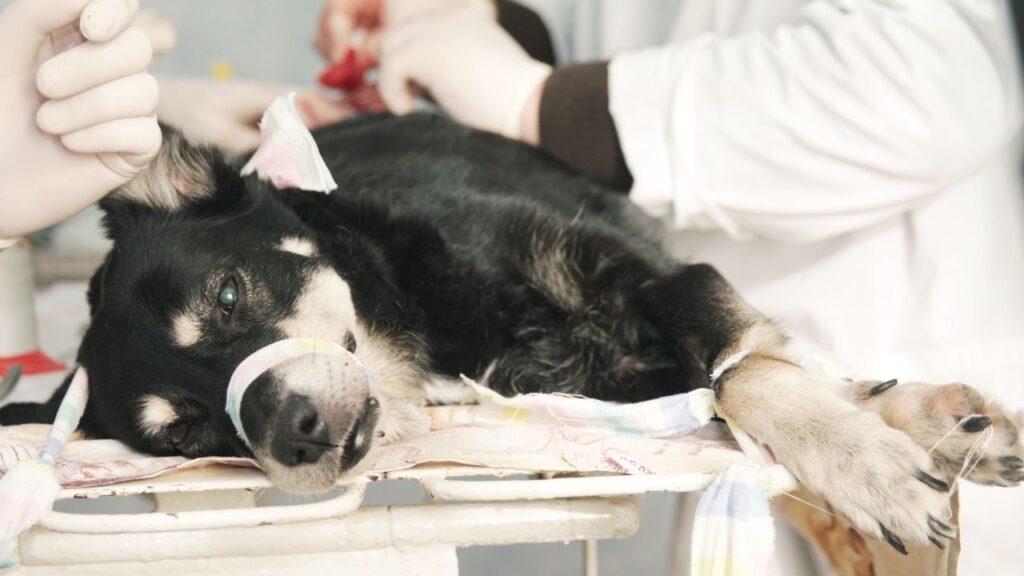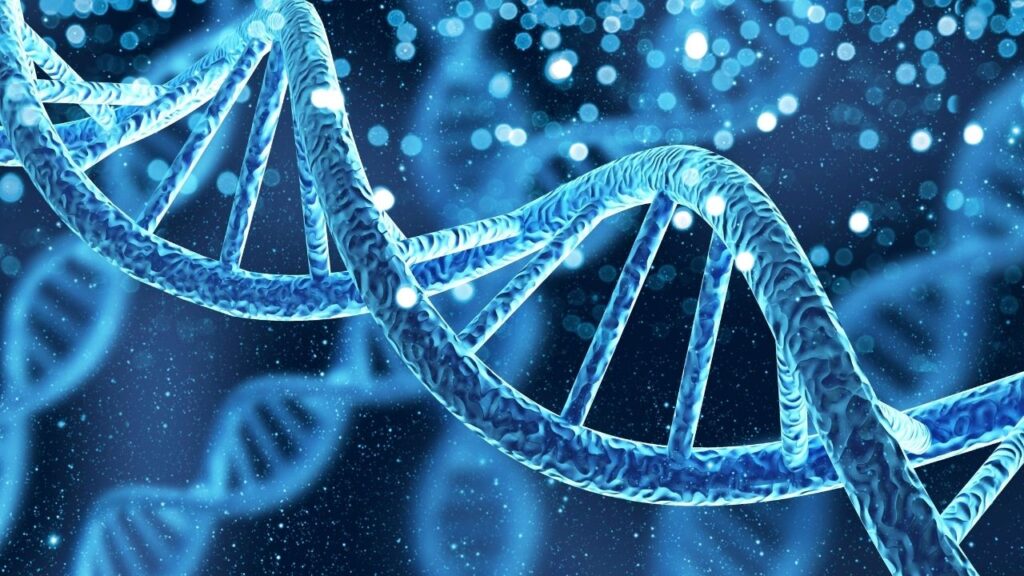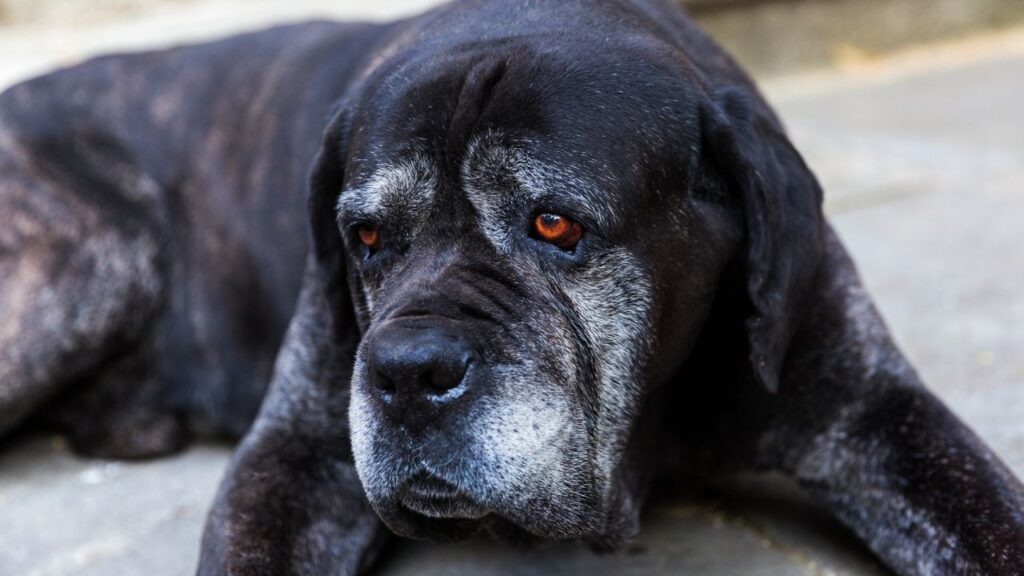Stomach cancer in dogs is very rare and has a poor prognosis. However, if caught early enough, surgery to remove the stomach tumor can often provide months to years with a good quality of life.
Key Takeaways
- The life expectancy for a dog with stomach cancer varies widely, based on what subtype and how advanced it is. In general, dogs with malignant stomach cancer, who are not treated, live less than three months.
- Depending on how invasive and how big your dog’s stomach tumor is, it may be painful around his stomach and abdomen. Otherwise, symptoms of canine stomach cancer are usually related to problems with digestion, such as vomiting and weight loss.
- If caught early and treated aggressively, stomach cancer in dogs can be cured. However, most stomach tumors are hard to diagnose and have spread by the time they are detected.
- The final stages of stomach cancer in dogs are usually related to problems from the stomach cancer itself, or from the cancer that has spread to other parts of the body. Most dogs are euthanized before these symptoms are so severe that they are affecting quality of life.
- Stomach cancer in dogs is very rare and the initial symptoms are very non-specific. Symptoms you may see include nausea, vomiting, diarrhea, constipation, lethargy, and weight loss, which are all symptoms of many different diseases of the digestive system.
- There is no known cause of stomach cancer in dogs, including specific diets. However, some evidence shows feeding a diet processed with nitrosamines may slightly increase risk. This is usually processed meat products, not high-quality dog food.
- If your dog has stomach cancer, feed him what your veterinarian recommends. Sometimes this will be a normal diet, and sometimes – especially after surgery or other treatments – they may need a special diet.
Stomach Cancer in Dogs Can Occur In Several Types of Cells
Stomach cancer, also called gastric carcinoma, gastric tumors, or canine gastric cancer, can arise from a variety of cell types in the stomach. Stomach cancer in dogs can occur anywhere in the stomach, but certain parts are more prone to developing tumors, such as the lesser curvature and the pylorus (the part of the stomach that connects to the intestine).
Canine stomach cancer can metastasize – or spread – to other parts of the gastrointestinal system, to lymph nodes, and to other organs.
Stats and Facts
- Stomach cancer accounts for less than 1% of cancers in dogs.1
- Stomach cancer has already metastasized in 70-90% of dogs by the time they are diagnosed.1,2
- There are many subtypes of canine stomach cancer, depending on what kind of cell it starts from: 1,3-5
- Adenocarcinomas – tumors that arise from the cells that line the stomach — are the most common. Adenocarcinomas make up nearly 90% of all canine stomach cancers.
- Leiomyomas and leiomyosarcomas (tumors of the smooth muscle) and lymphosarcoma (tumors of the lymphatic system) are considered the next most common stomach tumors in dogs.
- Gastrointestinal Stromal Tumors (GISTs) arise from the Interstitial Cells of Cajal. These cells are “pacemaker” cells found in the muscle layer of the intestinal wall, which control the rhythmic movement of the gastrointestinal tract.
- Mast Cell Tumors – tumors of a specific type of immune cell – are very rare in the gastrointestinal tract of dogs.
The Causes of Stomach Cancer in Dogs
There is no known cause of canine stomach cancer, though it likely involves an inherited genetic element. Stomach cancer in dogs is most likely caused by a complex mix of genetics, age, and bad luck.
There is also a connection between canine stomach cancer and a diet high in nitrosamines (NDMA). While there are various sources of nitrosamines in food, the most common exposures for dogs are tobacco and meats processed with nitrites, which produce nitrosamines when cooked.1,5
In theory, feeding your dog too much processed meat may very slightly increase the risk of this very rare cancer. However, do not feel guilty if your dog may have gotten the occasional hotdog at a family BBQ, as the risk is likely very minimal that this can directly cause stomach cancer.
Breeds at Risk for Stomach Cancer
Although any breed of dog can get stomach cancer, the breeds most commonly affected include:1,6
- Rough Collie
- Belgian Shepherd Dog (Tervuren and Groenendael)
- Staffordshire Terrier
- Chow Chow
- Standard Poodles
Other Risk Factors for Stomach Cancer in Dogs
Other factors that can increase the risk of developing canine stomach cancer include:
- Males are more affected than females.1,6
- It is most common in older dogs between ages 7 and 11 years.1,6
- Helicobacter pylori (H. pylori) infection is associated with increased stomach cancer risk in humans, but its role in canine stomach cancer is unknown.5
- Exposure to nitrosamines (NDMA) such as from tobacco or processed meats.
Other than a diet high in nitrosamines, no specific living conditions or environmental factors have been identified to increase the risk of stomach cancer in dogs. However, obesity is associated with an increased risk of some types of stomach cancer in humans.7,8
Maintaining an active lifestyle, a balanced diet, and a healthy weight may reduce the risk of stomach and other cancers in dogs.
Symptoms
Common symptoms of stomach cancer in dogs include:
Less common symptoms of stomach cancer in dogs include:
- Bloody vomit (hematemesis)
- A sore or distended stomach
- Low red blood cell count (anemia)
- Diarrhea
- Constipation
- Unexplained bad breath (halitosis)
Symptoms of stomach cancer vary based on the location and size of the tumor, as well as whether the stomach tumor is ulcerated or bleeding. Stomach cancer can be painful as the tumor gets larger and starts to interfere with digestion.
All these symptoms are nonspecific, meaning they can be caused by a variety of health conditions ranging from something as simple as eating garbage to as serious as stomach cancer. A veterinary exam is necessary to determine what is causing your dog’s symptoms, and it may take quite a search to diagnose it properly.
Diagnosis
If your veterinarian suspects stomach cancer, he or she will start by doing some tests to try to visualize a tumor or changes in the stomach:
- Radiographs (x-rays)
- Ultrasound
- Endoscopy (examination of the GI tract with a camera at the end of a long flexible tube)
None of these tests can make a complete diagnosis of stomach cancer.
To confirm if any findings from these tests are stomach cancer, a sample of the tumor (biopsy) must be taken to perform cytology or histology (examination of a sample of cells or tissue under a microscope).
Biopsy samples of the tumor can be taken during an endoscopy, but they will be tiny. Abdominal surgery — although invasive and expensive — is considered the best way to get a biopsy. This is because it provides the best opportunity to sample the tumor, provides a chance to look for abdominal metastasis, and may also provide a simultaneous opportunity to remove the tumor.
Your veterinarian or veterinary oncologist may recommend some follow-up tests to look for metastatic stomach cancer. These tests may include:
- Radiographs (x-rays)
- Ultrasound
- CT scans
- Endoscopy
- Abdominocentesis (removal of a small sample of fluid from the abdomen using a needle)
- Physical examination by laparotomy (surgical opening of the abdomen for examination of the organs)
- Physical examination by laparoscopy (examination of the organs using small incisions and insertion of small, flexible cameras)
Prognosis and Staging
Usually after an intensive testing phase, your veterinarian should be able to identify which type or subtype of stomach cancer your dog has, whether it is benign or malignant, and whether or not it has metastasized.
Benign tumors of the stomach have a very good prognosis. However, even if a benign tumor does not metastasize, it may still require surgery as it can disrupt the function of the stomach and gastrointestinal tract.
Staging — or determining how severe the cancer is — can help determine your dog’s prognosis and may influence treatment decisions.
For gastric adenocarcinoma, staging is typically done using the TNM method.4 TNM stands for Tumor, (lymph) Node, and Metastasis. Your dog will get a rating for each category:
Tumor:
T1 – tumor present but not invading the serosa (the outside layer of the stomach)
T2 – tumor invading serosa
T3 – tumor invading neighboring structures
Multiple tumors are present if m is added to one of these values (ex: T1m).
Node:
N0 – no evidence of lymph node involvement
N1 – evidence of regional (nearby) lymph node involvement
N2 – lymph nodes throughout the body involved
Metastasis:
M0 – no evidence of metastasis
M1 – distant metastasis present
The staging method will differ for some of the rarer subtypes of stomach cancer in dogs, such as gastric lymphoma. There may not be an officially recognized staging scheme for dogs for some uncommon cancers.
Because stomach tumors are rare in dogs, reports of prognosis vary. In general, dogs with benign stomach tumors and dogs whose stomach tumors were caught early and removed with clean margins have a median survival time of more than 3 years.
Unfortunately, most canine stomach cancers are diagnosed after they have already metastasized.
There is a large range of reports for median survival time for more malignant stomach tumors:
- Gastric carcinoma, after surgery alone, has an average median survival time of under six months. 1,2,4
- Gastrointestinal Stromal Tumors (GIST) typically have higher survival rates and longer survival times after surgery, if the tumor is less aggressive on histopathology.12
- Canine stomach cancer generally has a median survival time of under three months if left untreated.4
Treating Stomach Cancer In Dogs
Because it is rare and can be difficult to diagnose, stomach cancer in dogs has usually metastasized by the time it is discovered. This makes canine stomach cancer very hard to treat successfully.
Treatment of canine stomach cancer is not usually focused on obtaining a “cure.” Instead, the goal is usually to stabilize the disease and keep the dog comfortable and symptom-free for as long as possible.
In a few cases – if the stomach tumor is caught early, surgically removed with clean margins, and has not metastasized – a good outcome, or even a cure, is possible.
Surgery
Surgery is the most common treatment for stomach cancers.
Surgery can involve removing up to 70% of the stomach in some cases. If the tumor has extended beyond 70% of the stomach, the tumor is considered inoperable and euthanasia or palliative care is recommended.
As with any surgery, there are substantial risks and side effects. Especially in older dogs, who are more likely to be diagnosed with stomach cancer, anesthesia alone is a risk.
Surgical recovery can take several days to weeks. During this time, your dog must be kept from vigorous activity, maintain a special diet, and be monitored for stomach ulcers and infection.
In the cases that surgery is not curative, it can still be palliative. Removing a large stomach tumor can greatly increase your dog’s quality of life.1,2,4
Chemotherapy
There are a variety of subtypes of stomach cancer in dogs. Adenocarcinomas are the most common. Many chemotherapy drugs have been used in dogs with adenocarcinoma. However, it is unclear how effective they are.1
Because stomach cancer in dogs is rare, it is difficult to determine if any particular chemotherapy protocol is more effective than surgery alone.
Chemotherapeutics that have been used in gastric adenocarcinomas include:
- Carboplatin and cisplatin
- Doxorubicin
- Mitoxantrone
- Gemcitabine
- 5-Fluororacil
- Cyclophosphamide
- Prednisolone (steroid used as part of many chemo protocols)
- Piroxicam1 (nonsteroidal anti-inflammatory drugs best known for helping with bladder cancer)
A combination of therapies may also be considered.1
Gastric lymphomas account for a smaller number of stomach tumors in dogs. Chemotherapy is much more commonly used in these cancers, either alone or following surgery.1,4
Gastrointestinal Stromal Tumors (GISTs) are rare stomach tumors in dogs. The occurrence of this tumor is so low it is difficult to conduct clinical trials in dogs. In one study, toceranib phosphate (Palladia®) showed some effectiveness in seven dogs with measurable Gastrointestinal Stromal Tumors (GISTs). In this study, the tumors shrunk either partially or completely for some period of time. Due to the small number of dogs available, this study did not have controls, so results should be interpreted with caution.9,10
Radiation
Radiotherapy is not commonly recommended for dogs with stomach cancer because of the side effects to nearby organs.4 However, radiation may be a reasonable option for the future, especially with newer technologies, either as part of a combination treatment1 or part of palliative care.11
Immunotherapy
Immunotherapy is not used in canine gastric cancers at this time.
Vaccine
There is no vaccination to treat or protect against gastric cancer.
Diet
No diet can treat gastric cancer. You may wish to consult with your veterinarian on the best diet to alleviate symptoms or discomfort for your dog.
Dogs who have had surgery on their stomachs will require a special diet and smaller meals. Some dogs will be unable to take solid food for a time after surgery. Follow your veterinarian’s instructions carefully regarding feeding after surgery. You can expect that they will have very specific needs to protect the incision and minimize irritation.
Supplements
There are no supplements identified as beneficial specifically to stomach cancer in dogs.
It is important that you consult your veterinarian or oncologist before giving your dog any supplements. Especially after gastric surgery or during chemotherapy, your dog’s digestive system will be in a delicate state. Some chemotherapy drugs are less effective when given with some supplements.
Alternative Therapies
There are not any specific alternative therapies to treat gastric cancer.
CBD and non-steroidal anti-inflammatories (NSAIDs) may be potential palliative care options. While there is no clinical evidence for either, there may be some benefit to one or both of them in certain cases.
CBD is unlikely to be harmful and may offer some pain relief. Non-steroidal anti-inflammatories (NSAIDs) should be used with caution because they can cause disruption to the gastrointestinal system and in some cases, gastric ulcers. Always consult with your dog’s veterinarian before using either of these medications.
What the End Stages Look Like for Stomach Cancer in Dogs
The initial symptoms that brought you to the vet will progress and may become overwhelming. Depending on where it spreads, metastatic stomach cancer can lead to many other health problems, including difficulty urinating, lethargy, and pain.
Most people elect euthanasia when stomach cancer symptoms negatively impact their dog’s quality of life.
Prevention Strategies
Stomach cancer in dogs is rare and probably caused by a complex mix of genetics, age, and bad luck. While there is nothing guaranteed to prevent canine stomach cancer, there are things you can do to improve your dog’s health in general.
Keeping your dog at a healthy weight, providing plenty of exercise, feeding quality food, and avoiding processed meats that might contain nitrates is a good plan for both good health and reducing cancer risk.
- Araújo D, Cabral I, Vale N, Amorim I. Canine Gastric Cancer: Current Treatment Approaches. Veterinary sciences. 2022;9(8):383.
- Abrams B, Wavreille VA, Husbands BD, et al. Perioperative complications and outcome after surgery for treatment of gastric carcinoma in dogs: A Veterinary Society of Surgical Oncology retrospective study of 40 cases (2004–2018). Veterinary Surgery. 2019;48(6):923-932.
- CCA Team. Stomach cancer in dogs: Signs, causes, prognosis, treatment. Canine Cancer Awareness. https://caninecancerawareness.org/stomach-cancer-in-dogs. Published January 12, 2022. Accessed February 1, 2023.
- Gualtieri M, Monzeglio MG, Scanziani E. Gastric neoplasia. VETERINARY CLINICS OF NORTH AMERICA SMALL ANIMAL PRACTICE. 1999;29:415-440.
- Hugen S, Thomas R, German A, Burgener I, Mandigers P. Gastric carcinoma in canines and humans, a review. Veterinary and Comparative Oncology. 2017;15(3):692-705.
- Seim-Wikse T, Jörundsson E, Nødtvedt A, et al. Breed predisposition to canine gastric carcinoma – a study based on the Norwegian canine cancer register. Acta Veterinaria Scandinavica. 2013/03/21 2013;55(1):25. doi:10.1186/1751-0147-55-25
- Yang P, Zhou Y, Chen B, et al. Overweight, obesity and gastric cancer risk: results from a meta-analysis of cohort studies. European journal of cancer. 2009;45(16):2867-2873.
- Chen Y, Liu L, Wang X, et al. Body mass index and risk of gastric cancer: a meta-analysis of a population with more than ten million from 24 prospective studies. Cancer epidemiology, biomarkers & prevention. 2013;22(8):1395-1408.
- Berger EP, Johannes CM, Jergens AE, et al. Retrospective evaluation of toceranib phosphate (Palladia®) use in the treatment of gastrointestinal stromal tumors of dogs. Journal of veterinary internal medicine. 2018;32(6):2045-2053.
- Frost D, Lasota J, Miettinen M. Gastrointestinal stromal tumors and leiomyomas in the dog: a histopathologic, immunohistochemical, and molecular genetic study of 50 cases. Veterinary Pathology. 2003;40(1):42-54.
- Pires E, Khorsand M, Lee BI, Ciepluch B, Boss MK. Hypofractionated radiotherapy provides palliation for a dog with advanced gastric carcinoma. Veterinary Record Case Reports. 2022:e327.
- Sellon RK. Gastrointestinal neoplasms in dogs and cats (proceedings). DVM 360. https://www.dvm360.com/view/gastrointestinal-neoplasms-dogs-and-cats-proceedings. Published April 1, 2009. Accessed February 1, 2023.
- Son K. A pet owners guide to stomach cancer in dogs: Causes, symptoms, and treatment. Veterinarians.org. https://www.veterinarians.org/stomach-cancer-in-dogs/. Published February 28, 2023. Accessed March 23, 2023.
Topics
Did You Find This Helpful? Share It with Your Pack!
Use the buttons to share what you learned on social media, download a PDF, print this out, or email it to your veterinarian.








